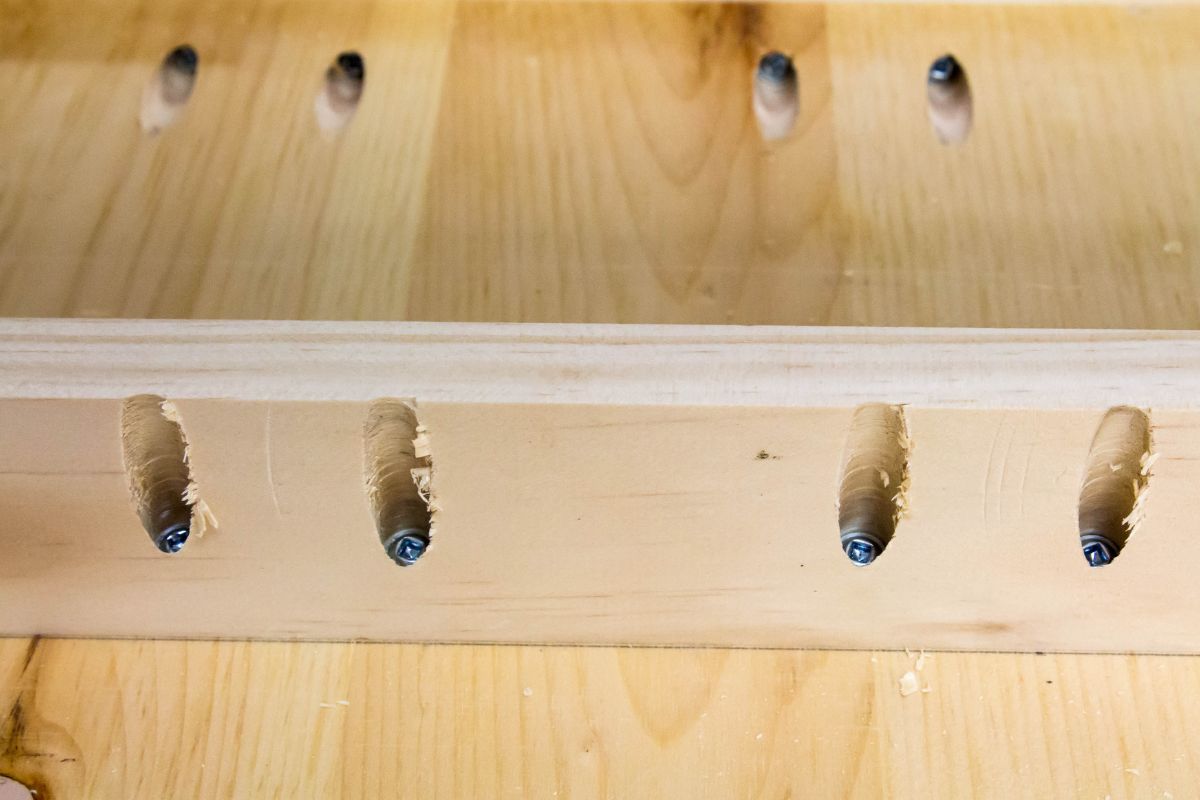5 Creative Ways to Use Pocket Screws in Your Projects
Pocket screws for stronger, cleaner woodworking joints

Pocket screws are one of the easiest ways to create strong, hidden joints in woodworking projects. They’re quick, reliable, and eliminate the need for complex joinery techniques like mortise and tenon. If you’re building furniture, repairing an antique, or crafting outdoor projects, pocket screws can simplify your work while delivering professional results.
Pocket screws are a perfect example of this balance, blending innovation and practicality to help woodworkers of all skill levels. Below, we’ll share five creative ways to use pocket screws and some tips to get the best results.
What Are Pocket Screws, and Why Are They Useful?
Pocket screws work by connecting two pieces of wood through a small, angled pocket hole. This allows the screws to sit flush or hidden, keeping your project clean and polished. They’re strong enough for anything from furniture building to heavy-duty storage and are easy to use with hardwood, softwood, and even plywood.
The beauty of pocket screws lies in their versatility and speed. You can ditch the clamps in many cases because pocket screws hold everything tightly together. Plus, they’re beginner-friendly yet still trusted by professionals.
1. Build Strong Face Frames for Cabinets
If you’re making cabinets or built-ins, face frames are essential for that polished, professional look. Pocket screws can help you assemble them with ease.
- Drill pocket holes on the back side of rails and stiles (the horizontal and vertical pieces).
- Use pocket screws and a bit of wood glue to attach the pieces. The screws act as a clamp while the glue dries, ensuring a solid and durable joint.
- This method works great for kitchen cabinets, bathroom vanities, and even custom furniture.
At Bay & Bent, we know the value of clean, sturdy construction. Pocket screws help you achieve perfectly aligned joints without visible fasteners, giving your project high-end results.
2. Assemble Beautiful Tabletops
If you’ve ever tried gluing boards together for a tabletop, you know how tricky it can be to keep everything lined up. Pocket screws are a game-changer here.
- Arrange your boards for the best grain match and style.
- Drill pocket holes underneath alternating boards to keep the screws out of sight.
- Tighten the screws to pull the boards together while your glue sets.
This technique is perfect for farmhouse tables, workbenches, or rustic dining tables. It keeps clamping to a minimum and results in a sturdy tabletop that’ll last for generations. The hidden screws preserve the wood’s beauty while adding extra strength.
3. Create Custom Built-In Shelving
Built-ins add character and functionality to any space, whether it’s a library, entertainment center, or pantry storage. Pocket screws make the process smoother, even if you’re working solo.
- For vertical supports, drill pocket holes on the inside faces to hide them behind shelves.
- On horizontal shelves, place pocket holes on the underside for clean sight lines.
- Use pocket screws to attach nailers to the wall before adding your shelving, creating secure anchor points.
Pocket screws allow for quick assembly, so you can focus on design and function.
4. Tackle Repairs and Restoration
Pocket screws are lifesavers for fixing furniture or restoring older pieces. They’re discreet yet strong, making them ideal for invisible repairs.
- Use them to tighten loose chair joints, stabilize table legs, or fix broken cabinet doors.
- When repairing antiques, pocket screws can strengthen weak points without altering the piece’s original appearance.
At Bay & Bent, we specialize in preserving the beauty and integrity of historic structures. The lessons we’ve learned from centuries-old timber frames can also apply to your furniture repair projects. Pocket screws offer modern reinforcement while respecting traditional craftsmanship.
5. Build Durable Outdoor Projects
Pocket screws aren’t just for indoor use. They’re fantastic for outdoor furniture, garden planters, and even deck railings. Here’s how they shine outdoors:
- Use corrosion-resistant pocket screws, like stainless steel or coated varieties, to withstand weather.
- Since pocket screws are hidden, they reduce water pooling, which can lead to rot.
- Their angled design adds durability, keeping joints tight even in fluctuating temperatures.
Speed is also key for outdoor projects. Pocket screws help you quickly assemble anything from fences to patio storage, even when you’re working on a deadline before the next rainstorm.
Tips for Success with Pocket Screws
To get the best results, follow these pocket screw tips:
- Use the right drill bit: Special pocket hole drill bits create precise angles and countersinks for perfect joints.
- Match screw length to material: Too short, and they won’t hold; too long, and they’ll break through your wood.
- Drill pilot holes in hardwoods: This prevents splitting, especially near the edges.
- Don’t over-tighten: Stop when the wood surfaces meet snugly; too much force can strip the hole or crack the material.
Avoid These Common Mistakes
- Skipping pre-planning: Mark where each pocket hole will go to avoid messy or weak placements.
- Ignoring grain direction: Screws hold better when driven with the grain, so plan accordingly.
- Choosing cheap materials: High-quality screws and wood make all the difference in durability and appearance.
Why Pocket Screws Should Be a Go-To Tool
Pocket screws make woodworking faster and easier without sacrificing quality. From heirloom furniture to quick outdoor projects, they help you create durable, professional-grade results. At Bay & Bent, we love how this tool marries old-school craftsmanship with modern efficiency, much like our timber frame restoration process.
Curious about high-quality materials or custom woodworking solutions? Contact Bay & Bent
today to learn how our expertise can support your next project. Whether you need tips, inspiration, or services, we’re here to help you build something exceptional.









